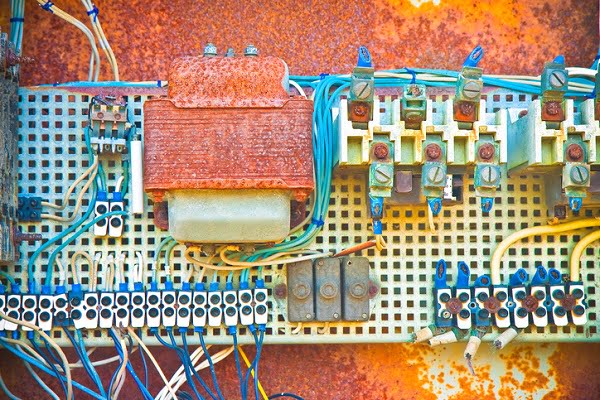3 Steps to Prevent Corrosion in Electrical Enclosure Cooling Systems
Environmental and climate conditions can negatively affect electrical enclosures in several ways. Beside the negative effects of excessive heat, dust and dirt, and the formation of corrosion is an issue that can plague enclosures. Corrosion doesn’t form without a reason; excessive condensation is most often the primary contributor to the formation of corrosion within enclosures.
For the electrical components within the enclosure, the formation of corrosion can reduce electrical continuity and the lifespan of the electrical connections leading to short circuits and breakdowns.
Corrosion is also a problem within enclosure air conditioners or heat exchangers not equipped with adequate protection for copper and aluminum refrigeration circuit components. To prevent corrosion to refrigeration tubing, condenser and evaporator components, utilizing electrostatic epoxy coating options for cooling system components will promote equipment longevity.
Factors Causing Condensation
Several factors can lead to the formation of condensation which range from rapid temperature changes, high humidity or improperly designed enclosure cooling systems. Also, rain and snow can infiltrate poorly sealed enclosures causing water to collect inside, resulting in elevated moisture levels.
Condensation can also form as the ambient temperature drops at night, when the equipment is shut down or occur due to seasonal weather fluctuations.
How to Control Condensation to Keep Corrosion from Forming
Designing humidity control into the enclosure cooling system to keep the relative humidity below 60% and by controlling sudden temperature variations, will help manage condensation. Tightly sealed electrical enclosures large enough to allow adequate air flow also reduce the risk of condensation.
Here are three steps to control condensation and keep corrosion from forming in electrical enclosure cooling systems:
1. Keeping Moisture Out With a Sealed NEMA Rated Enclosure
In marine environments or in areas with exposure to corrosive gases and other hazardous materials, the effects of corrosion can intensify. Choosing a fully sealed NEMA type 4 or 4X electrical enclosure equipped with a closed loop cooling system will help minimize infiltration of both humid ambient air and water from inclement weather into the electrical enclosure.
Enclosures located indoors are equally susceptible to both humidity and high pressure water spray.
2. Using Enclosure Cooling Systems to Limit Condensation
By maintaining steady air-flow through the totally sealed electrical enclosure the formation of condensation can be reduced by using a cost effective air-to-air heat exchanger or a robust enclosure air conditioner.
When designing an enclosure cooling system it’s a good idea to plan for extreme temperature variations with both cooling and heating in mind. In situations where the ambient temperature drops below the dew point, an air conditioner with a digitally controlled integrated heater will maintain enclosure temperatures above the dew point in order to prevent condensation.
3. Avoid Oversized Enclosure Air Conditioners
Besides oversized enclosure air conditioners having a higher initial cost, the cooling units may struggle to reduce humidity levels inside the enclosure due to frequent on-off cycling.
When calculating the required enclosure cooling system capacity using the Enclosure Temperature Management (ETM) Calculator, do not add more than a ten to twenty percent safety factor to the cooling capacity result when selecting an air conditioner model.
Avoid Corrosion with Proper Enclosure Cooling System Planning
Proper planning and sizing of enclosure cooling systems is critical in order to keep electrical equipment functioning efficiently in a wide range of environmental conditions. The white paper, “Top 29 Enclosure Cooling Questions Asked by Prospective Thermal Edge Customers” will guide you through the decision making process from initial project planning phase, to installation and to ongoing routine maintenance, ensuring long term protection and trouble-free operation for your electrical equipment.
The guide will also explain all of the factors that should be considered when specifying the best system for your application. For additional help the experts at Thermal Edge are available to help you properly choose the correct electrical enclosure cooling system.


